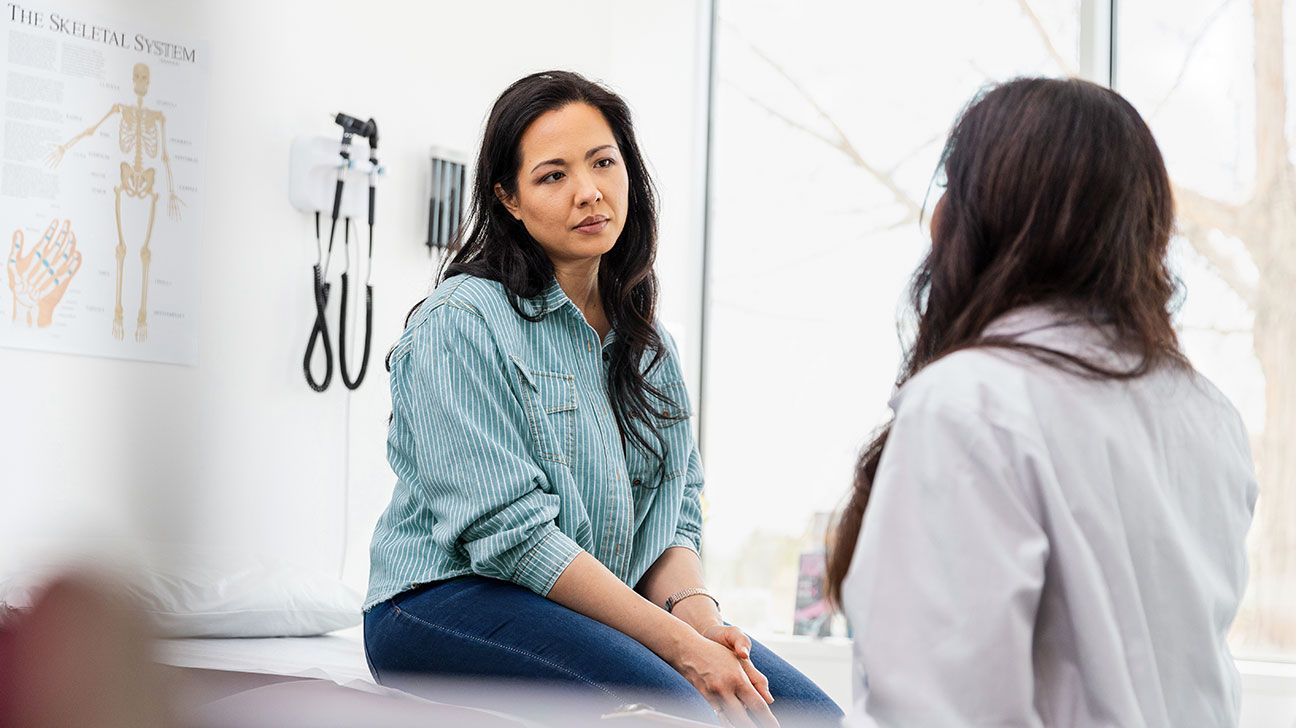The primary treatment option for ovarian cancer is surgery. But surgery isn’t the right treatment option for everyone with this cancer.

The best treatment depends on factors such as stage at diagnosis, tumor size, and tumor location, as well as your age and overall health.
This is why doctors may sometimes use treatments such as chemotherapy, radiation therapy, immunotherapy, targeted drug therapy, and hormone therapy — which they commonly use along with surgery — instead of surgery.
Often, the goal of nonsurgical ovarian cancer treatment is controlling cancer spread. These treatments aim to kill cancer cells, shrink cancer cells, and reduce cancer symptoms.
These treatment options can’t remove a tumor the way surgery can, but they can sometimes slow down cancer growth.
There are several different treatments for ovarian cancer with or without surgery. Most often, people have these treatment options along with surgery, but you might have one of these treatments or a combination of these treatments even if surgery isn’t the right choice for you.
Your cancer team can help you decide which route is best for you.
Chemotherapy
Chemotherapy uses powerful drugs to help kill and destroy cancer cells. You might receive it orally or through a vein, and you’ll typically receive it in cycles. The
Chemotherapy is linked to side effects. These can include:
- nausea
- vomiting
- hair loss
- foot rashes
- hand rashes
- mouth sores
- easy bruising and bleeding
- increased infections
Radiation therapy
Radiation therapy uses high energy X-rays to shrink tumors and kill cancer cells. Radiation treatments are focused on the area of your tumor.
Radiation treatments are fast and painless. Typically, you’ll receive radiation therapy several days a week for several weeks.
There are side effects associated with radiation therapy. These include:
- skin blistering
- skin peeling
- fatigue
- nausea
- vomiting
- diarrhea
- vaginal irritation
- vaginal discharge
Hormone therapy
Hormone therapy uses hormones to treat cancers affected by the body’s hormones. This can include ovarian cancer.
The hormones doctors use to treat ovarian cancer are called luteinizing hormone-releasing hormone (LHRH) agonists. They control how the ovaries produce estrogen. Doctors use them because lowering estrogen levels can slow down the growth of ovarian tumors.
You receive LHRH antagonists via injection. It’s common to have an injection once every
There are some side effects linked to LHRH agonists. They include:
- weakened bones
- hot flashes
- vaginal dryness
- an increased risk of blood clots
Targeted therapy
Targeted therapy uses drugs to find cancer cells. The drugs attack parts of these cells and slow down their reproduction.
There are different types of targeted therapy. One type for ovarian cancer is called bevacizumab. This drug attacks a protein present in cancer cells, slowing cancer growth.
Another option for ovarian cancer is PARP inhibitors. This type of targeted therapy is especially effective for people with mutations in the BRCA gene. The drug can interfere with the way atypical BRCA genes work, slowing down their reproduction.
Targeted therapy can cause a range of
- nausea
- vomiting
- headache
- bleeding
- frequent infections
- easy bleeding
- mouth sores
- anemia
- changes in appetite
- changes in how food tastes
- unintentional weight loss
Immunotherapy
Immunotherapy can help the immune system fight cancer cells. You typically receive these drugs through a vein once every 3, 4, or 6 weeks.
Side effects of immunotherapy can include:
- cough
- wheezing
- nausea
- rash
- itching
- joint pain
- loss of appetite
- constipation
- diarrhea
Some people find that alternative treatments help manage their symptoms of ovarian cancer. These alternative treatments might help ease pain or reduce stress. However, these treatments haven’t been proven to have benefits such as destroying cancer cells.
Some common alternative treatments include:
It’s always important to make sure you understand and feel comfortable with your treatment plan. Having a conversation with your doctor can help you achieve this.
It’s a good idea to ask your doctor questions such as:
- What are my treatment options?
- What stage is my cancer?
- What’s the most likely outcome of that treatment?
- What are the side effects of that treatment?
- What will happen if I don’t receive that treatment?
- Should I get a second opinion?
- How soon do I need to make a treatment decision?
Where to find support if you’re having treatment for ovarian cancer
It’s important to have support while you’re receiving treatment for ovarian cancer. Many organizations can provide support, resources, and guidance during your treatment.
You can check out:
The outlook for ovarian cancer depends on factors such as stage, tumor size, tumor growth, and response to treatment, as well as your age and overall health.
As a general rule, people who receive surgery have better outcomes than people who don’t. However, most people who don’t have surgery also have late stage ovarian cancer.
The 5-year relative survival rate for all types of ovarian cancer is
The 5-year relative survival rate for epithelial tumors, the most common type of ovarian cancer, when they’ve spread to distant locations in the body is 31%. Doctors diagnose most ovarian cancers in these later stages.
Surgery is the most common treatment option for ovarian cancer. But it’s not always the best treatment.
Sometimes, factors such as tumor size or stage mean that surgery isn’t possible. When this happens, other options may be a better choice, such as:
- chemotherapy
- immunotherapy
- hormone therapy
- radiation therapy
- targeted therapy
